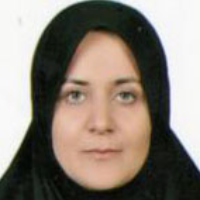The Effect of Continuous Care Model on the Burden Care of Family Caregivers of Stroke Patients
Caring for a stroke patient imposes a high level of care on family caregivers and affects their lives that require specific attention. The aim of this study was to determine the effect of the follow-up care model on the care pressure of family caregivers of stroke patients.
This is a quasi-experimental study. The study population was family caregivers of stroke patients. 60 family caregivers were selected based on inclusion criteria and were divided into two groups of intervention and control using a random number table. In the intervention group, the follow-up was implemented for one month based on care model. The control group received routine training during discharge. Data collection tools were demographic questionnaire and Zarit care pressure. The samples answered the questionnaires one day before discharge and one week after the intervention. Data were analyzed by descriptive statistics (mean, standard deviation, rate, percentage) and inferential tests (independent and paired t-test, chi-square, Mann-Whitney) by spss-18 software.
The mean score of caring stress before the intervention was not significantly different between the two groups (P <0.67). After the intervention, the mean score of care pressure in the intervention group was significantly lower than the control (P˂0.001). The mean score of care pressure before and after the intervention in the intervention group was significantly different (P˂0.01).
Follow-up care reduces the care pressure on family caregivers of stroke patients. It is recommended to be used to reduce the stress of care and the problems caused by it in the care of stroke patients.
-
The Effect of Nursing Counseling on the Family Syndrome of a Patient Hospitalized in an Intensive Care Unit: A Semi-Experimental Study
Maryam Alirezaei Diziche, Fatemeh Salmani*,
Journal of Critical Care Nursing, -
Designing and implementing a telenursing on anxiety and satisfaction with care in selected endoscopy patients
Rasoul Hajbabaei, Fatemeh Salmani*,
Iranian Journal of Nursing Research,


